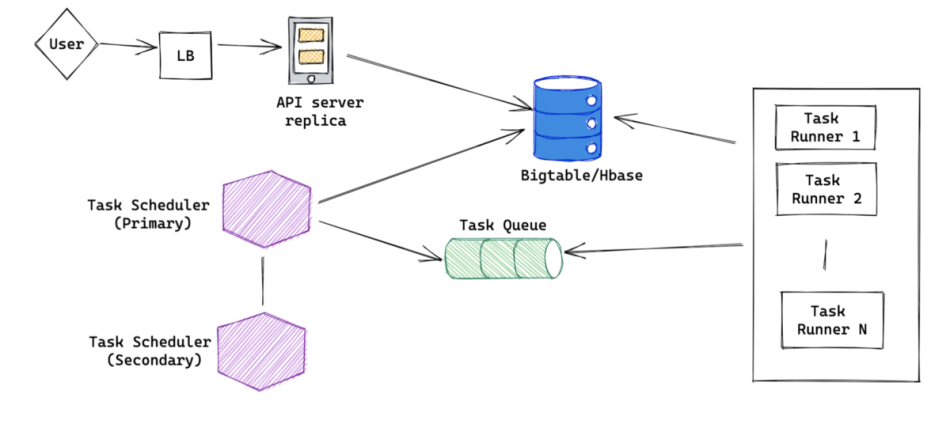Implement Timer Node Synchronization in Java: A Step-by-Step Guide
 Tuanhdotnet
Tuanhdotnet5 min read

1. Understanding Timer Node Synchronization
Before diving into the implementation, it’s essential to grasp what timer node synchronization entails. In distributed systems or multi-threaded applications, nodes often need to execute tasks in perfect sync. Timer synchronization ensures that these nodes execute events or tasks at the same time or with a predictable lag.
1.1 Why is Timer Synchronization Important?
Imagine a distributed game server where multiple players rely on synchronized events, such as game rounds or resource spawning. Without proper synchronization:
- Tasks might execute at inconsistent intervals.
- System states might drift apart, causing errors.
- Resource wastage can occur due to repeated or skipped tasks.
Timer synchronization resolves these issues, maintaining accuracy and reliability across nodes.
1.2 Challenges in Timer Node Synchronization
Synchronization isn't trivial, as nodes might:
- Have different local clocks.
- Experience varying latencies.
- Face failures or disruptions during synchronization.
These challenges require robust design to ensure resilience and fault tolerance.
2. Implementing Timer Node Synchronization in Java
Java provides tools like ScheduledExecutorService and distributed libraries like Hazelcast to implement timer synchronization. Below, we explore an implementation using ScheduledExecutorService for local synchronization and an additional example using distributed synchronization with Hazelcast.
2.1 Timer Synchronization Using ScheduledExecutorService
ScheduledExecutorService is ideal for scheduling tasks at fixed intervals. Here's how we synchronize timers across threads in a single-node system:
import java.util.concurrent.Executors;
import java.util.concurrent.ScheduledExecutorService;
import java.util.concurrent.TimeUnit;
public class TimerSynchronization {
private static final ScheduledExecutorService scheduler = Executors.newScheduledThreadPool(2);
public static void main(String[] args) {
Runnable task1 = () -> System.out.println("Task 1 executed at: " + System.currentTimeMillis());
Runnable task2 = () -> System.out.println("Task 2 executed at: " + System.currentTimeMillis());
long initialDelay = 0;
long period = 1000; // 1 second
// Schedule both tasks
scheduler.scheduleAtFixedRate(task1, initialDelay, period, TimeUnit.MILLISECONDS);
scheduler.scheduleAtFixedRate(task2, initialDelay, period, TimeUnit.MILLISECONDS);
}
}
Explanation:
- Two tasks (task1 and task2) are scheduled to execute every second.
- The scheduleAtFixedRate method ensures both tasks run at consistent intervals.
- By using the same initialDelay and period, tasks stay synchronized.
Key Observations:
- While simple, this solution works only on a single node.
- There's no guarantee of synchronization accuracy if the tasks rely on different machines.
2.2 Timer Synchronization Across Nodes Using Hazelcast
For multi-node systems, libraries like Hazelcast offer distributed scheduling and synchronization. Here's an example of achieving timer synchronization across nodes:
import com.hazelcast.core.Hazelcast;
import com.hazelcast.core.HazelcastInstance;
import com.hazelcast.scheduledexecutor.ScheduledTaskHandler;
import com.hazelcast.scheduledexecutor.ScheduledExecutorService;
import java.util.concurrent.TimeUnit;
public class DistributedTimerSynchronization {
public static void main(String[] args) {
HazelcastInstance hazelcastInstance = Hazelcast.newHazelcastInstance();
ScheduledExecutorService scheduler = hazelcastInstance.getScheduledExecutorService("timerScheduler");
Runnable distributedTask = () -> System.out.println("Synchronized task executed at: " + System.currentTimeMillis());
// Schedule the task on all cluster members
ScheduledTaskHandler handler = scheduler.scheduleAtFixedRate(distributedTask, 0, 1, TimeUnit.SECONDS);
// Monitor task execution
System.out.println("Task is scheduled with handler: " + handler);
}
}
Explanation:
- Hazelcast Instance: Nodes connect to the Hazelcast cluster, enabling distributed task execution.
- ScheduledExecutorService: Tasks are scheduled across the cluster using Hazelcast’s distributed service.
- Schedule Accuracy: Hazelcast ensures tasks execute in sync across nodes.
Benefits:
- Resilient to node failures.
- Supports dynamic addition or removal of cluster members.
Limitations:
- Slight delays may occur due to network latency.
- Requires additional setup and resources.
3. Techniques for Enhancing Timer Synchronization
Timer synchronization is just the start. Let’s explore methods to refine the implementation for better performance and reliability.
3.1 Using NTP for Clock Synchronization
Network Time Protocol (NTP) ensures that all nodes share the same clock reference. Java doesn’t provide native NTP support, but libraries like Apache Commons Net make it easy to synchronize clocks before scheduling tasks.
import org.apache.commons.net.ntp.NTPUDPClient;
import org.apache.commons.net.ntp.TimeInfo;
import java.net.InetAddress;
public class ClockSynchronization {
public static void main(String[] args) throws Exception {
String ntpServer = "pool.ntp.org";
NTPUDPClient client = new NTPUDPClient();
client.open();
InetAddress hostAddr = InetAddress.getByName(ntpServer);
TimeInfo info = client.getTime(hostAddr);
System.out.println("NTP Time: " + info.getMessage().getTransmitTimeStamp().getDate());
client.close();
}
}
3.2 Fault Tolerance with Heartbeat Mechanisms
For distributed systems, implementing a heartbeat ensures nodes remain synchronized even if one fails temporarily. Nodes regularly send heartbeats to confirm they’re active and in sync.
3.3 Monitoring and Logging
Synchronization logs help identify drift or delays. Tools like Grafana and Prometheus can visualize synchronization metrics for better debugging.
4. Conclusion
Timer synchronization in Java is vital for both local and distributed systems. By leveraging tools like ScheduledExecutorService for local systems and Hazelcast for distributed setups, we can achieve robust synchronization. Integrating NTP and heartbeat mechanisms further enhances reliability, while proper monitoring ensures issues are detected early.
Have questions or ideas to share? Drop them in the comments below—we’d love to discuss!
Read more at : Implement Timer Node Synchronization in Java: A Step-by-Step Guide
0
Subscribe to my newsletter
Read articles from Tuanhdotnet directly inside your inbox. Subscribe to the newsletter, and don't miss out.
Written by

Tuanhdotnet
Tuanhdotnet
I am Tuanh.net. As of 2024, I have accumulated 8 years of experience in backend programming. I am delighted to connect and share my knowledge with everyone.